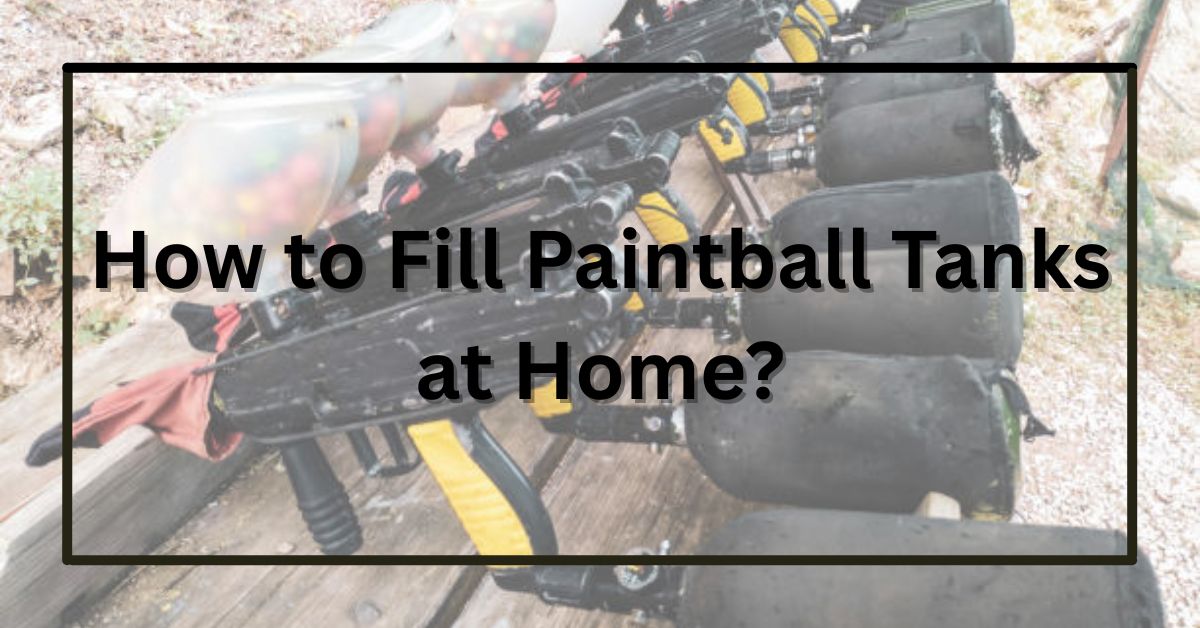Paintball tanks need regular refills to keep your marker firing smoothly, but going to a field or shop every time can be inconvenient. That’s why some players consider filling paintball tanks at home.
While this is possible, it requires proper equipment, knowledge, and above all, strict safety precautions.
In this guide, we’ll break down the process step by step so you can decide if filling paintball tanks at home is right for you.
Types of Paintball Tanks
Before filling, it’s important to understand the type of tank you own:
- CO₂ Tanks—These were common in early paintball but are less popular today. They’re cheaper but sensitive to temperature changes.
- HPA (High-Pressure Air) Tanks—These use compressed air or nitrogen, offering better consistency and performance. Most modern paintball players use HPA.
The filling process depends entirely on which tank type you have.
Equipment Needed to Fill Paintball Tanks at Home
- For CO₂ Tanks: A CO₂ refill station, a large CO₂ siphon tank, and proper fittings.
- For HPA Tanks: Either a high-pressure air compressor designed for paintball tanks or a scuba tank with a paintball fill station adapter.
- Safety Gear: Pressure gauges, gloves, and proper regulator checks to avoid dangerous overfills.
Step-by-Step Guide: Filling CO₂ Tanks at Home
- Check Tank Expiry: Make sure your tank is within its hydro test date.
- Attach Refill Station: Securely connect the CO₂ refill station to your siphon tank and paintball tank.
- Fill Slowly: Open the valve carefully, allowing CO₂ to transfer gradually.
- Weigh the Tank: A properly filled CO₂ tank should match its designated weight to avoid dangerous overfills.
Step-by-Step Guide: Filling HPA Tanks at Home
- Check Safety Ratings: Confirm the maximum PSI rating of your tank (usually 3,000 or 4,500 PSI).
- Connect to Air Source: Attach the tank to your scuba tank or compressor using a fill station adapter.
- Use the Slow-Fill Method: Gradually open the valve—filling too fast causes overheating and damage.
- Monitor the Gauge: Watch the pressure gauge carefully and stop once the desired PSI is reached.
Safety Precautions
- Never exceed your tank’s pressure limit.
- Inspect O-rings and seals before filling to prevent leaks.
- Keep tanks away from extreme heat and direct sunlight.
- Always respect hydro test and re-certification dates.
Safety should be your #1 priority—paintball tanks are under extreme pressure, and mistakes can be dangerous.
Costs of Home Filling vs. Professional Refills
- Initial Costs: Scuba tanks, compressors, and fill stations can cost hundreds of dollars.
- Long-Term Savings: If you play often, refilling at home may save money compared to paying for fills at fields.
- Best for Frequent Players: If you only play occasionally, it’s usually more cost-effective to refill at your local paintball shop.
Common Mistakes to Avoid
- Overfilling beyond safe PSI limits.
- Ignoring hydro test dates can make tanks unsafe.
- Using untested or low-quality filling equipment.
- Rushing the fill process instead of taking it slow.
Conclusion:
It is feasible to fill paintball tanks at home, but you must have the necessary equipment, knowledge, and a strong dedication to safety.
Investing in diving tanks or compressors can help serious players save time and money.
However, for casual players, refilling at your local paintball shop or field remains the safest and most convenient option.

